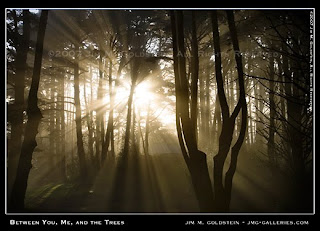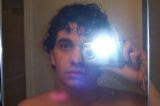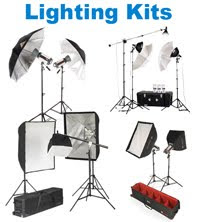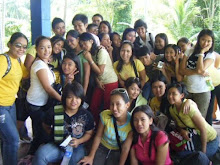



What is an "aperture" ?
Aperture is referred to the lens diaphragm opening inside a photographic lens. The size of the diaphragm opening in a camera lens REGULATES amount of light passes through onto the film inside the camera the moment when the shutter curtain in camera opens during an exposure process. The size of an aperture in a lens can either be a fixed or the most popular form in an adjustable type (like an SLR camera). Aperture size is usually calibrated in f-numbers or f-stops. i.e. those little numbers engraved on the lens barrel like f22 (f/22),16 (f/16), f/11, f/8.0, f/5.6, f/4.0, f/2.8, f/2.0, f/1.8 etc. Each of this value represents one time the amount of light either more or less in quantity. Meaning to say, f/16 will let in 1X the amount of light than a diaphragm opening of f/22 and so forth; while on the other hand, an aperture of f/4.0 will let in 1X lesser than that of f/2.8 etc.
Note: the diaphragm blades inside this manual focus Canon FD lens control the amount of light passing through the lens that eventually hitting to the film during an exposure process. The 'amount', or simply explained in layman term -opening changes according to selection of aperture (f/number). In this case, it is indicated by the f-numbers that imprinted on the lens barrel.
LENS SIDE:- If a simple word "diaphram" can be confusing to you, just try to think numbers engraved on the lens barrel are NOT referred to aperture diaphragm BUT rather, there are just number to let you refer the size of the lens diaphragm. So, if you are new to this, just memorize these numeric settings that will do, as they represent the corresponding size of the lens diaphram inside the lens and let you determine and control how much light you would require to let into the camera for a proper exposure by way of selecting an appropriate aperture diaphragm from large to small (lens opening). But technically, these numbers refer to the relative physical opening of the lens diaphragm. So, don't worry about the confusing part of them.
Modern Autofocus SLR cameras may have a different ways in manipulating the aperture. One of the trend is - the aperture value is now control via a thumb wheel on the camera (usually near the shutter release button) and the AF lens has no aperture ring to alter the value. Each camera manufacturer usually has their own series of lenses under a trade name to verify its usage, various compatibility issues with their previous camera model's function etc. For an instance, Canon manual focus lenses are called "FD" or "FL"; while their newer series of autofocus lenses (AF) designed for their Canon EOS Series cameras are referred as "EF" (Electro Focus). Each of these MF/AF lenses has their own respective way to illustrate the control of aperture in the camera. When you turn the aperture ring on a lens to vary the aperture, you will be able to check visually the set opening of the lens diaphragm (Opens bigger or stopping smaller). * here in this section, I am confining the discussion within the MANUAL FOCUS lenses ONLY because the proportion of used equipment forms the basis for a cheap, easy entry for potential new serious photographers.
Application
The aperture stop is an important element in most optical designs. Its most obvious feature is that it limits the amount of light that can reach the image/film plane. This can either be undesired, as in a telescope where one wants to collect as much light as possible; or deliberate, to prevent saturation of a detector or overexposure of film. In both cases, the size of the aperture stop is constrained by things other than the amount of light admitted; however:
The size of the stop is one factor that affects depth of field. Smaller stops (larger f numbers) produce a longer depth of field, allowing objects at a wide range of distances to all be in focus at the same time.
The stop limits the effect of optical aberrations. If the stop is too large, the image will be distorted. More sophisticated optical system designs can mitigate the effect of aberrations, allowing a larger stop and therefore greater light collecting ability.
The stop determines whether the image will be vignetted. Larger stops can cause the intensity reaching the film or detector to fall off toward the edges of the picture, especially when for off-axis points a different stop becomes the aperture stop by virtue of cutting off more light than did the stop that was the aperture stop on the optic axis.
A larger aperture stop requires larger diameter optics, which are heavier and more expensive.
In addition to an aperture stop, a photographic lens may have one or more field stops, which limit the system's field of view. When the field of view is limited by a field stop in the lens (rather than at the film or sensor) vignetting results; this is only a problem if the resulting field of view is less than was desired.
The pupil of the eye is its aperture; the iris is the diaphragm that serves as the aperture stop. Refraction in the cornea causes the effective aperture (the entrance pupil) to differ slightly from the physical pupil diameter. The entrance pupil is typically about 4 mm in diameter, although it can range from 2 mm (f/8.3) in a brightly lit place to 8 mm (f/2.1) in the dark.
In astronomy, the diameter of the aperture stop (called the aperture) is a critical parameter in the design of a telescope. Generally, one would want the aperture to be as large as possible, to collect the maximum amount of light from the distant objects being imaged. The size of the aperture is limited, however, in practice by considerations of cost and weight, as well as prevention of aberrations (as mentioned above).
In photography
The aperture stop of a photographic lens can be adjusted to control the amount of light reaching the film or image sensor. In combination with variation of shutter speed, the aperture size will regulate the film's degree of exposure to light. Typically, a fast shutter speed will require a larger aperture to ensure sufficient light exposure, and a slow shutter speed will require a smaller aperture to avoid excessive exposure.
Diagram of decreasing aperture sizes (increasing f-numbers) for "full stop" increments (factor of two aperture area per stop)
A device called a diaphragm usually serves as the aperture stop, and controls the aperture. The diaphragm functions much like the iris of the eye – it controls the effective diameter of the lens opening. Reducing the aperture size increases thedepth of field, which describes the extent to which subject matter lying closer than or farther from the actual plane of focus appears to be in focus. In general, the smaller the aperture (the larger the number), the greater the distance from the plane of focus the subject matter may be while still appearing in focus.
The lens aperture is usually specified as an f-number, the ratio of focal length to effective aperture diameter. A lens typically has a set of marked "f-stops" that the f-number can be set to. A lower f-number denotes a greater aperture opening which allows more light to reach the film or image sensor. The photography term "one f-stop" refers to a factor of √2 (approx. 1.41) change in f-number, which in turn corresponds to a factor of 2 change in light intensity.
Aperture priority is a semi-automatic shooting mode used in cameras. It allows the photographer to choose an aperture setting and allow the camera to decide the shutter speed and sometimes ISO sensitivity for the correct exposure. This is sometimes referred to as Aperture Priority Auto Exposure, A mode, Av mode, or semi-auto mode.[3]
Maximum and minimum apertures
The specifications for a given lens typically include the minimum and maximum apertures. These refer to the maximum and minimum f-numbers the lens can be set at to achieve, respectively.
The aperture range of a 50mm "Minolta" lens, f/1.4-f/16
A typical lens will have an f-number range from f/16 (small aperture) to f/2 (large aperture) (these values vary). The maximum aperture (minimum f-number) tends to be of most interest (and is always included when describing a lens). This value is also known as the lens speed, because it is proportional to the square of accepted light, and thus inversely proportional to the square of required exposure time (i.e. using a lens with f/2, one can take pictures at one quarter of the exposure time necessary using a f/4 lens). Lenses for 35mm cameras can have f-numbers below f/1.0. For instance both the Leica Noctilux-M 50mm ASPH and a Canon 50mm L-mount for rangefinders have a maximum aperture of f/0.95. Professional lenses for some movie cameras have f-numbers as low as f/0.75 (very large relative aperture). These are known as "fast" lenses because they allow in more light and therefore reduce the exposure time. Stanley Kubrick's film Barry Lyndon has scenes with the largest relative aperture in film history: f/0.7.
Lenses of low f-number, often with fixed focal length, are popular for example with photojournalists, who often work in dim light and typically have limited opportunity to introduce supplementary lighting.
Zoom lenses typically have a maximum aperture (minimum f-number) of f/2.8 to f/6.3 through their range. A very fast zoom lens will be constant f/2.8 or f/2, which means the relative aperture will stay the same throughout the zoom range. A more typical consumer zoom will have a variable relative aperture, since it is harder and more expensive to keep the effective aperture proportional to focal length at long focal lengths; f/3.5 to f/5.6 is an example of a common variable aperture range in a consumer zoom lens.





























